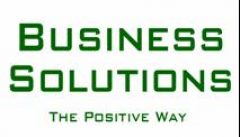Passive-aggressive behavior is one of the most insidious and costly forms of sabotage a business can encounter. I have personally seen individuals and groups cost their employers millions of dollars, damage the business reputation and actually put people’s lives at risk with these behaviors.
A detailed study by Booze Allen Hamilton showed that entire companies can take on passive-aggressive traits. These passive-aggressive companies fare poorly compared to their peers with about half less profitable. They are marked by second-guessing of decisions, poor communication, poor decision-making and a general ability to make progress. The best workers leave.
Passive-aggressive personality disorder (also referred to as negativistic personality disorder) is a controversial personality disorder marked by a pervasive pattern of negative attitudes and passive resistance in many interpersonal situations both on and off the job. The passive-aggressive can smile and say “yes” while they have absolutely no intention of doing anything other than “no.” They can ruin your life and damage your company if you let them.
You may refer to the passive-aggressive person in less than endearing terms as, it seems, they try to turn your life upside down. The passive-aggressive is one of the most distracting, disruptive and generally unpleasant personality types that most of us ever come into contact with. Since the passive-aggressive doesn’t wear a sign, you’ll only recognize them by their behavior. Some their behaviors are listed in this list.
Common Passive-Aggressive Behaviors
| · Sulks or argues · Intentional inefficiency · Complains without justification of unreasonable demands · “Forgets” obligations · Believes he is doing a much better job than others think · Resents suggestions from others · Fails to do his share · Unreasonably criticizes authority figures · Avoiding responsibility by claiming forgetfulness · Blaming others · Chronic lateness and forgetfulness · Does not express hostility or anger openly · Fosters chaos · Making excuses and lying · Obstructionism · Resentment · Sarcasm · Sullenness · Mad at the world · Envious and resentful · Feels cheated by life · Procrastinates · Alternately hostile and clingy |
A passive-aggressive may not have all of these behaviors, and may have other non-passive-aggressive traits. Cecil Adams writes: “Merely being passive-aggressive isn’t a disorder but a behavior — sometimes a perfectly rational behavior, which lets you dodge unpleasant chores while avoiding confrontation. It’s only pathological if it’s a habitual, crippling response reflecting a pervasively pessimistic attitude”
Very few individuals have the disorder but all too many people have the bad behaviors associated with passive-aggressive personality. And, as the saying goes, one bad apple will spoil the bunch.
Dealing with the passive-aggressive person:
I agree that the passive-aggressive response is a great way to get out of doing things. Just say you will and then don’t. It’s often simpler and more effective than justifying your real thoughts to a less than receptive audience.
The problem comes when the passive-aggressive tries to take over your life to suit their needs. You need to recognize the situation and take action.
As an individual you have very few choices in dealing with passive-aggressive behaviors by others:
1. You can stop providing a payoff to the passive-aggressive by not giving in to their manipulation. You teach people how to treat you – and some may learn.
2. Ask them to stop and pray that they’ll change their behavior toward you. Yes, I said “pray” because the truth is that you can do essentially nothing to change other people.
3. You can withdraw from the situation. Take care of yourself and associate only with people who treat you as they should. This may be the only solution in extreme cases.
As a co-worker you may find your own satisfaction and career at risk because of the actions of passive-aggressive co-workers. Options may include:
1. Asking the offending party for cooperation and better behavior.
2. Document situations and clearly identify responsibilities to substantiate a claim to management.
3. Remove them or yourself from the situation.
As a boss or employer you carry the responsibility to take action.
1. Don’t hire passive-aggressive personalities in the first place.
2. Make it clear that the passive-aggressive behaviors are not tolerated in your organization.
3. Find out who is passive-aggressive and offer guidance and corrective action promptly when you observe these negative behaviors. The passive-aggressive is often very skilled at flying below the radar so you’ll have to look hard. A good place to start is with departments, groups or teams that are not meeting their goals. Then you’ll have to be a detective to find the truth.
4. Take disciplinary action quickly when appropriate and if necessary following your company employee policy manual.
5. Make sure you company has clear lines of communication, well delineated responsibilities and well defined decision making.
6. Remove recalcitrant offenders from the organization.
My first working title for this paper was “Passive-aggressive Poison.” That’s really what these behaviors do to relationships and the workplace…poison them. Take the cure before it kills you.
What are you going to do now that you know better than to tolerate such behaviors?
In my real-world experience, applying the Profit Improvement Process is an effective and efficient way to expose and neutralize negative behaviors.

